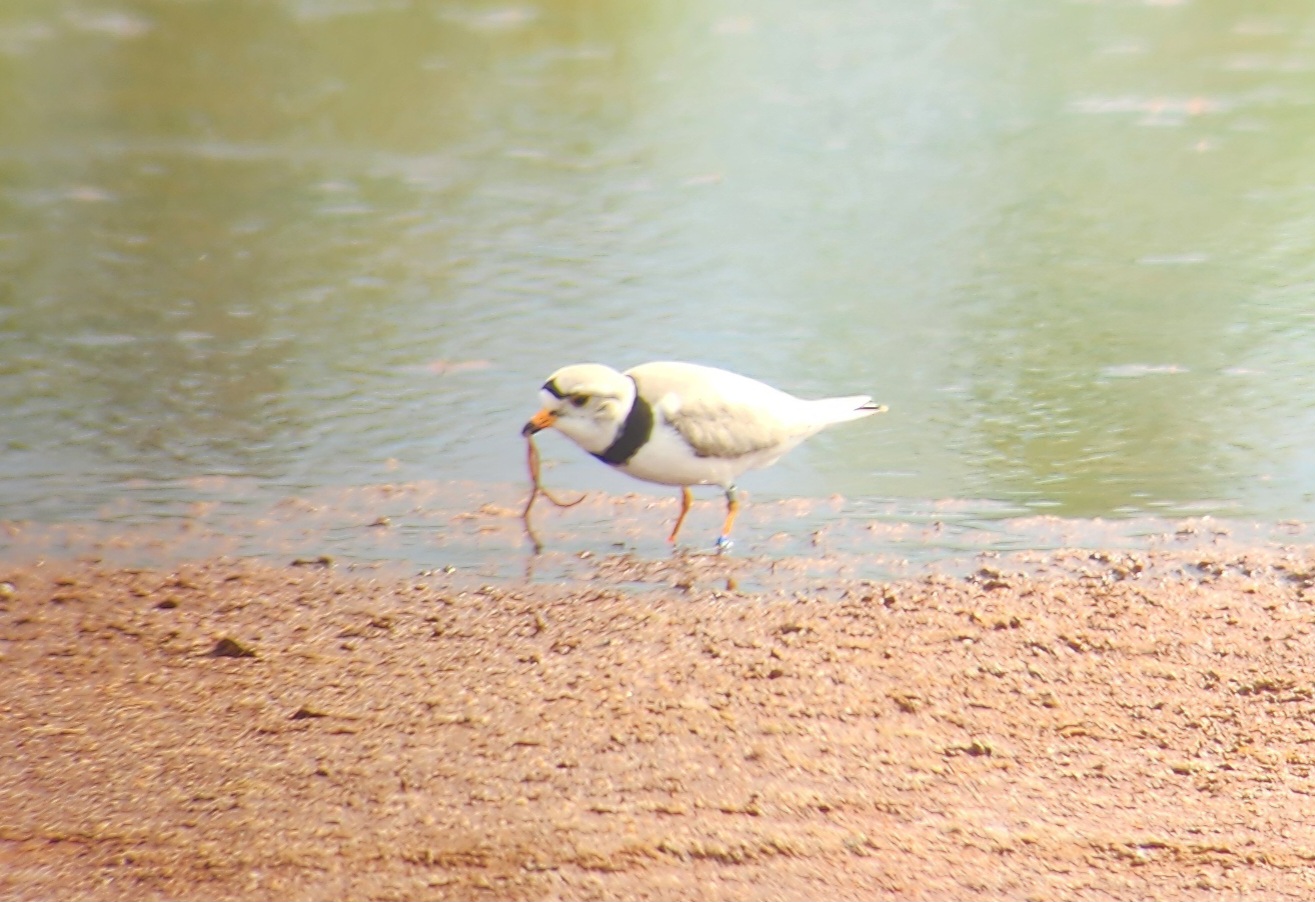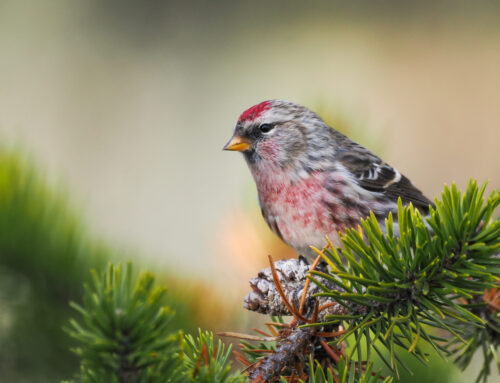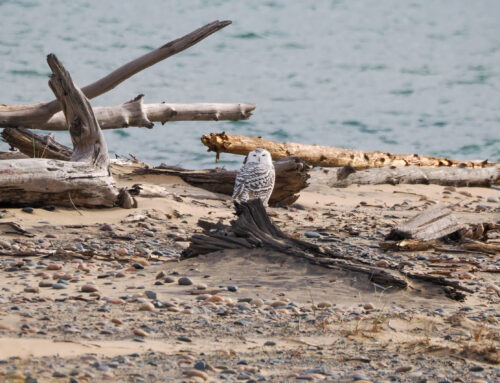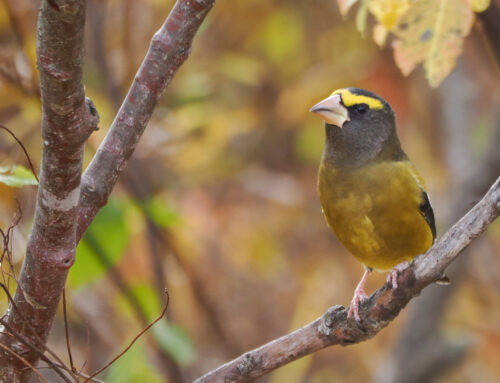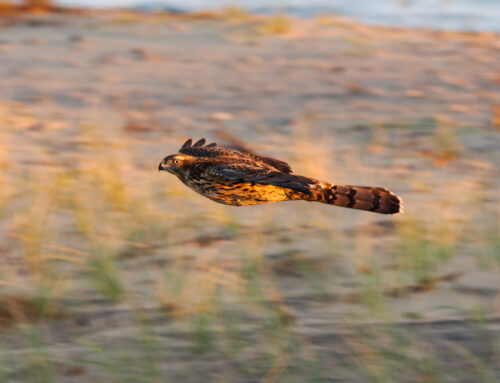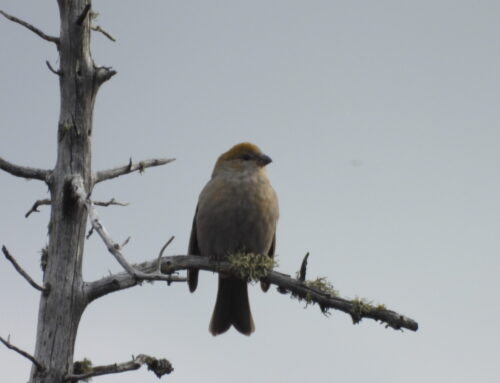Whitefish Point
In a few short days tiny Piping Plover chicks will be emerging from their protective shells to venture the shore of Whitefish Point. Vie and Little Bill Bob have kept true to their duty, making my job easy as I watch them peacefully incubate. The chicks are due to hatch June 22. I will be nearby in the following days to keep an eye out in case they aren’t on time. Here’s to four healthy PIPL chicks! While on the shore, please watch your step for these little cotton balls.
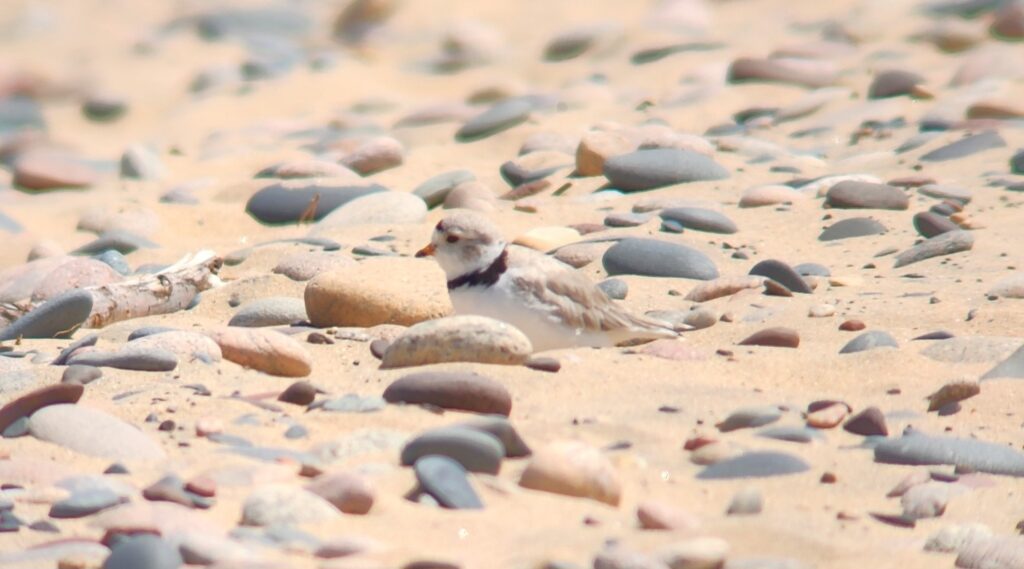
WPBO PIPL Little Bill Bob resting on the shore. Photo by Stephanie Owens
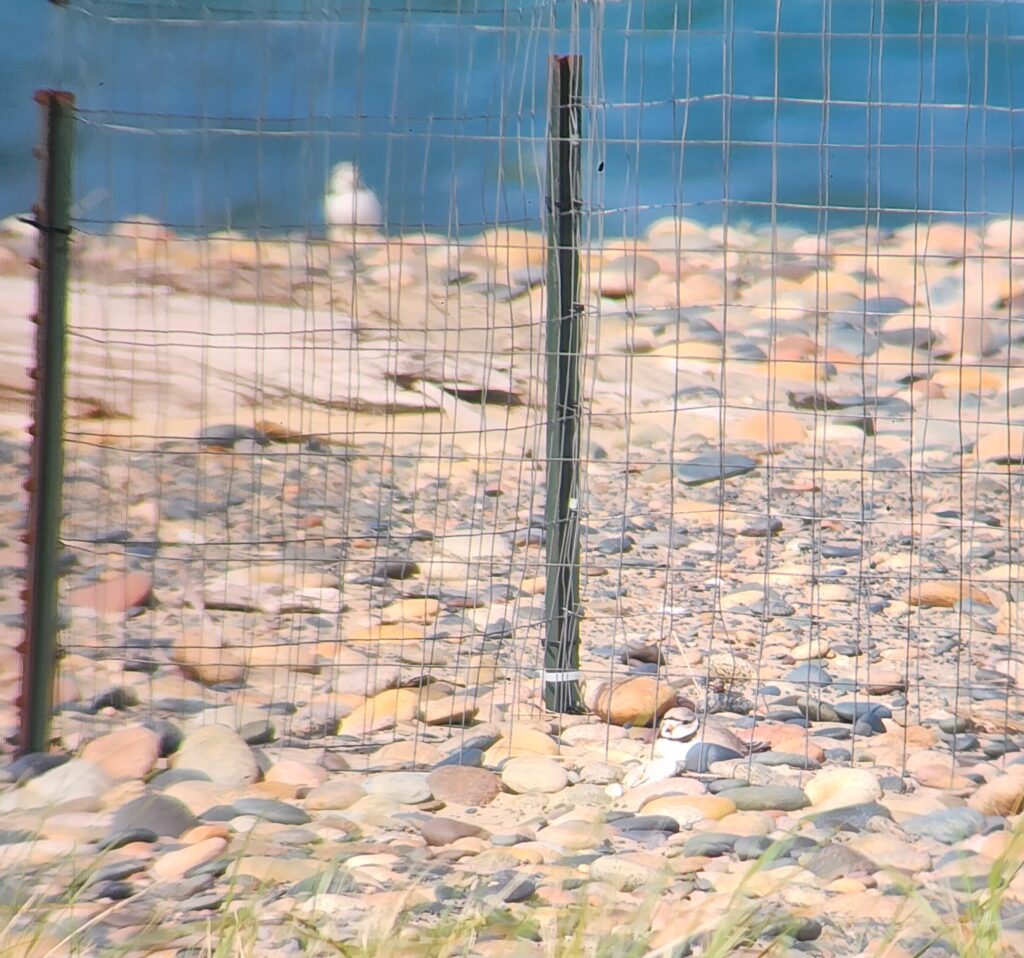
WPBO PIPL Nesting Pair about to switch turns incubating. Photo by Stephanie Owens
Hot Shot still frequents the area, having pushed his territory East adjacent to Vie and Bob’s nest. He can often be seen performing flight displays, and I sometimes wonder if he’s holding out hope for Vie. Perhaps he recognizes she’s the only female for miles, thinking maybe just one day she’ll leave her family and run away with him.
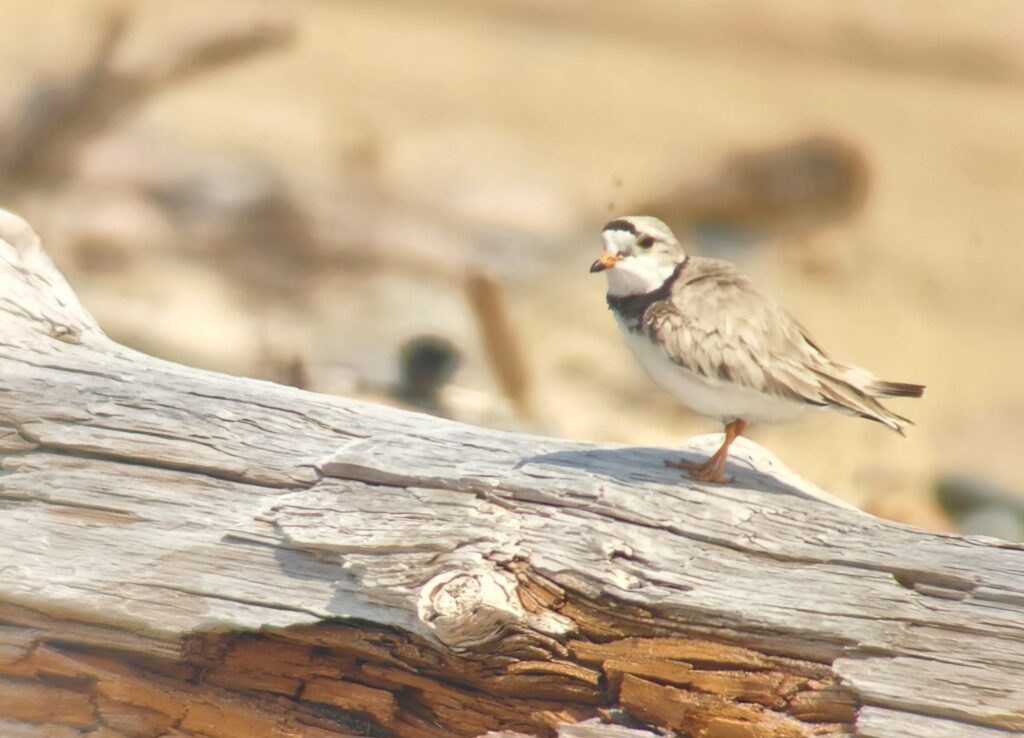
WPBO PIPL Hot Shot perched on driftwood. Photo by Stephanie Owens
Vermilion Point
Our pair from Vermilion has just a week’s more worth of waiting until the expected hatch date of June 28. They aren’t always aligning with plover behaviors I’ve come to expect though. One day recently I observed Rusty incubating restlessly, hopping off the nest for 10 seconds and then returning, five times within an hour. And then he disappeared for 10 minutes, showing back up with Gladys on the shore, with her eventually making her way to the nest. I was informed this isn’t cause for concern, and that he was probably just getting antsy for a switch. The pair remain committed to their nest, having peeped at me with disapproval and performing a broken-wing display when I checked their egg count this week (still a clutch of three).
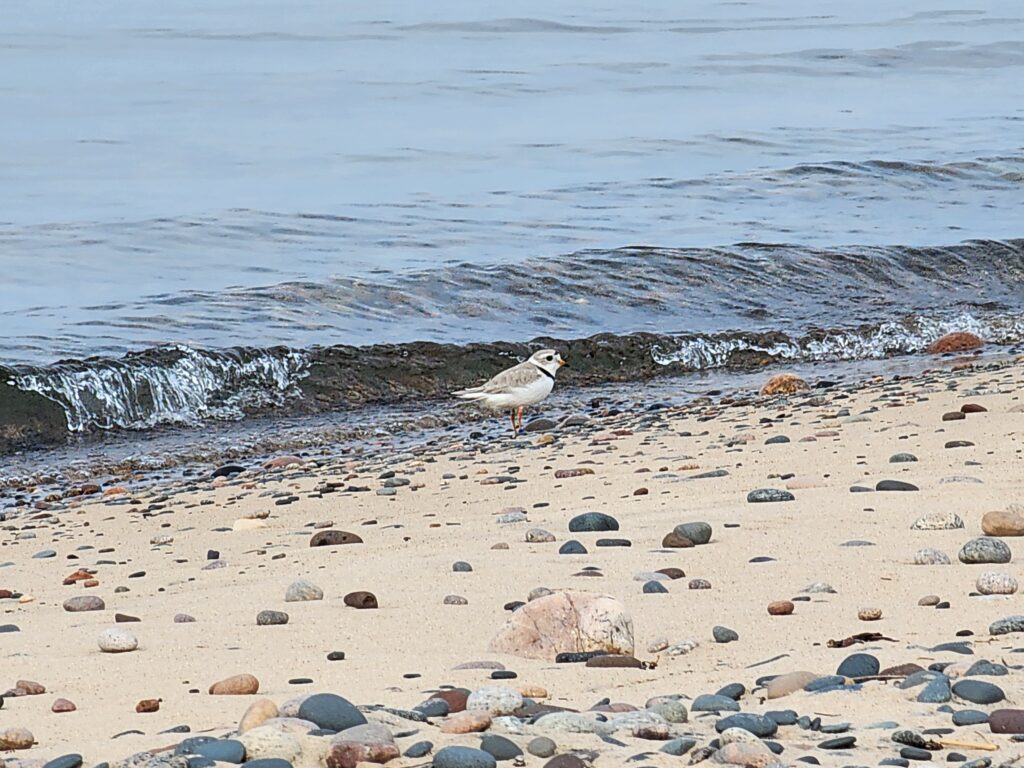
Vermilion PIPL Gladys on shore. Photo by Stephanie Owens
The vast open shores of Vermilion appear quite appealing to the traveling single males in the area. When he’s not incubating or foraging, Rusty is sparring with a few of these suitors. Among these include X,B:-,O, the male from failed Nest 1. Sometimes I find the widower near his former nest, enjoying the forage options from the mudflats behind the dunes.
~ Stephanie Owens, 2025 Piping Plover Monitor
Featured Photo: Vermilion PIPL X,B:-,O Male eating a worm on the mudflats | Stephanie Owens
Piping Plover monitoring is a collaborative effort between Michigan Audubon and Seney National Wildlife Refuge (USFWS).
You can keep up with the 2025 Piping Plover action at WPBO by reading Stephanie’s blog posts and following WPBO’s social media (Facebook, Instagram, and X).
Stephanie Owens: 2025 Piping Plover Monitor
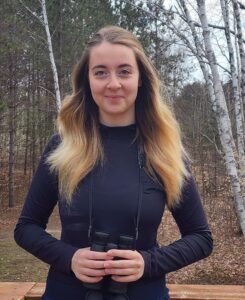 Having grown up in the Upper Peninsula of Michigan, an appreciation of the outdoors seemed inevitable for Stephanie. Walks in the woods with her father and high school science courses helped her identify this passion. In 2024, she earned a Bachelor of Science in Conservation Biology from Lake Superior State University, where she completed her senior thesis on the distribution of per- and polyfluoroalkyl substances in Eastern Upper Peninsula waterways. Now, with three seasons of PIPL monitoring under her belt, she looks forward to another summer with the U.P. plovers and returning to WPBO after a successful ’24 season. After the end of last season, Stephanie began her work at Eva Burrell Animal Shelter as a canine caretaker, fostering hope and love for all animals there.
Having grown up in the Upper Peninsula of Michigan, an appreciation of the outdoors seemed inevitable for Stephanie. Walks in the woods with her father and high school science courses helped her identify this passion. In 2024, she earned a Bachelor of Science in Conservation Biology from Lake Superior State University, where she completed her senior thesis on the distribution of per- and polyfluoroalkyl substances in Eastern Upper Peninsula waterways. Now, with three seasons of PIPL monitoring under her belt, she looks forward to another summer with the U.P. plovers and returning to WPBO after a successful ’24 season. After the end of last season, Stephanie began her work at Eva Burrell Animal Shelter as a canine caretaker, fostering hope and love for all animals there.

